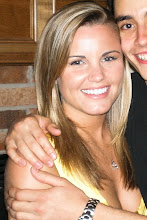Since this is my last blog, I think it is appropriate to talk about what I learned this semester as a whole. First I want to talk about privilege. After taking race, gender and the media, I have a whole new outlook on white privilege than before. Now when I go to the store or to a restaurant, I notice how I am treated differently because I’m white. I am now much more aware of how minorities are treated during my day-to-day outings. I don’t have to worry about being watched when I’m in a department store because they assume I will steal something and that is a privilege I never would have thought of before this class. I also realize I am privileged because it was not hard for me to find somewhere to live next semester because I am white and anyone will rent to me. These are privileges that came to light in race, gender and the media that as a white person, I have never noticed.
I also want to talk about racial diversity in the media. After taking this class, I am now much more aware of how much white people dominate the media. All of the shows I watch have Caucasian actors and actresses and barely any of the commercials have minorities either. When I watch the news, I notice the stories are always about white people unless there is a black person or other minority involved in some sort of crime. Although these are things that were already problems, I didn’t notice them until someone brought them to my attention. As a media professional, I want to make a conscious effort to bring diversity to the news and to journalism because the media doesn’t represent minorities in a positive light.
Another thing regarding race that I have learned is how stereotyping a race can be very harmful even if it’s a positive stereotype. I never realized how harmful stereotyping Asians could be because assuming they are all smart can create pressures and cause low self-esteem in the long run. That is just one example that I never realized was negative. People don’t realize that stereotyping is just as bad as being racist and I didn’t even know I was doing it. When you see a black person driving a nice car and you assume it’s because they are an athlete, that is a harmful stereotype. I never had someone bring that to my attention until this class. Stereotyping is something I personally want to work on because I think it can be just as bad as being racist.
One of my favorite topics this semester was about gender in the media. This is something that has always interested me because as a woman, it really frustrates me the way women are represented in the media. Stick thin models being portrayed as sexy is so frustrating to me. Like I said in my project, the average woman in the United States is a size 14 and the average model is a size 2. I think the media has such a negative impact on women’s self-esteem because it is impossible to live up to such high standards. As a media professional, I want to incorporate average sized women in commercials and advertisements because I don’t think it’s healthy to be portraying such thin women as “normal.”
In conclusion, I learned a lot about race and gender in this class and I want to take what I learned and be a more open-minded person and a better media professional. I think diversity is so important and it is something journalists and advertisers really need to work on.
